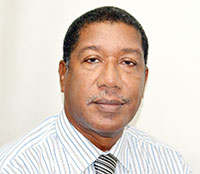IT never ceases to amaze me how many people still believe in falsehoods associated with dentistry. In fact, dental myths remain one of the greatest roadblocks to achieving good oral health.
These misconceptions promote behaviours that can be detrimental to the health of teeth, gums and oral tissue. Because myths need to be replaced with facts to ensure the deliverance of appropriate oral care, an attempt is being made here to dispel some of the more common falsehoods.
Myth. Mostly children get cavities
Regardless of age, cavities may occur whenever plaque, bacteria and sugar are present together in the mouth for more than 48 hours. Children usually develop cavities between the teeth and on the chewing surfaces. The elderly are especially prone to developing cavities on exposed root surfaces and around old fillings.
Myth. Cavities do not affect overall health.
If cavities are left untreated, decay will spread into the pulp (nerve) of the tooth causing an infection. Any infection can spread through the bloodstream to other parts of the body. If the brain becomes involved, death can result. In fact, nine different conditions originating from dental abscesses are known to be fatal. Therefore, cavities indeed can have harmful effects on overall health.
Myth. A toothbrush with hard bristles cleans teeth better than one with soft bristles
Using a toothbrush with hard bristles over a long period damages the teeth by wearing away the tooth’s surface. Brushing exposed roots with hard bristles causes serious damage over a shorter period because roots do not have a hard protective covering of enamel. Using a hard bristle on gums can damage the tissue and cause them to recede.
Myth. Plaque can be removed effectively by brushing.
It is not possible to clean the surfaces between the teeth when brushing. So brushing alone cannot guarantee that your teeth will not decay. To completely remove plaque from all surfaces, the teeth should also be flossed. Plaque is associated with tooth decay and gum disease. If not removed daily, plaque can harden into calculus. This rough, cement-like substance must then be removed professionally by a dentist or dental nurse.
Myth. Denture wearers do not need dental checkups
No denture fit is permanent. Over time, changes occur in the bone and soft tissues in the mouth. This affects the way a denture fits. To ensure continued proper fit, the denture wearer should have a dental exam at least once a year, so that necessary adjustments can be made. This yearly examination will also help alert the dentist to any signs of oral cancer.
Myth. Dentures should be worn at all times.
Dentures should be removed for at least six hours every day. This allows the tissues to rest and relieves the gums from the pressure of the denture. Excessive pressure can cause the supporting tissues of the denture to shrink. Dentures should be kept in water when they are not in the mouth so they do not warp.
Myth. Denture “fit” problems can be resolved by using denture adhesives and home-denture reliners.
If large amounts of adhesives are needed to retain a denture, the denture should be adjusted. A proper fit can only be obtained if the dentures are professionally relined. Wearing poorly fitted dentures can damage the bone and soft tissues increase infection and expose the wearer to oral cancer.
Myth. A toothache suggests that the tooth in question needs to be extracted
There are six indications that a tooth must be extracted and pain is not one of them. Either pulp infection, pulp stimulation or pulp exposure usually results in toothache. There is a dental procedure to solve all such circumstances. Your dentist should be the one to advise if a tooth should be extracted. Extractions generally cause mutilation which can never be fully repaired and which the patient often regrets when it is too late.



.jpg)









